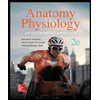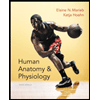2020SP Case Study RHK is a 68 year old man who has been brought to the ER by his son. The two were outside planting spring bulbs when RHK passed out after standing up from a kneeling position. His son managed to break the fall and there is no injury associated with the incident. Afterward, there was a brief period of chest discomfort and shortness of breath. RHK reports feeling lightheaded with some palpitations just before he fainted. He reports feeling pronounced weakness during the prior week. He is two years post CABG. He has no previous episodes of fainting or recent illnesses. He has no other complaints. The patient lives with his wife, uses alcohol occasionally, past tobacco use, no drug use Past medical history includes MI, CAD, 4 vessel CABG, hypercholesterolemia, claudication, and paroxysmal AF. Medications include warfarin 2mg PO QD, Metoprolol 25mg PO QD, Simvastatin 20mg PO QD, Triamterene/HCTZ 25mg PO QD, amiodarone 200mg PO QD Vital Signs BP 116/53 RR 16 HR 52 Oxygen saturation 99% on RA Temp 36.8 degrees C Exam: Healthy appearing male, alert and responsive. Patient is relaxed, reports no pain, no nausea. Cardiovascular: S1, S2; irregular; bradycardic; II/VI Systolic ejection murmur right upper sternal border; All other findings are normal including an extensive neurological exam RHK is given an IV, placed on oxygen therapy, a CBC, Ca, Mg, phosphate, CK, Tnl, & chem 7 blood studies, chest X-ray, ECG, ordered Results of the ECG reveal atrial flutter, no cardiac ischemia, and a variable block with HR in the 50s. CBC, cardiac enzymes, chem 7 and chest X-ray are normal. His BP is found to drop slightly when he sits up following a prone position. MI is ruled out and the patient is admitted for further observation. During the night, the patient’s HR intermittently falls to 30 BPM. Download this form and place your answer immediately following each question. AT THE END OF EACH ANSWER, CITE YOUR SOURCE USING PARENTHETICAL APA FORMAT. Using complete sentences, accurate spelling and correct grammar, define each of the following: Reference to follow each answer. MI CAD CABG Hypercholesterolemia (give values) Claudication Paroxysmal AF PO QD Bradycardia What are each of the following used to treat or to examine? Reference to follow each answer. Warfarin Metoprolol Simvastatin Triamterene Amiodarone CK Tnl 17- 29. Complete the following table: Vital sign Patient value Normal value (provide range) Pt value is: Low, Normal, High Reference in parenthetical APA format BP 116/53 Resp 16 breaths/minute Pulse 52 beats/minute Temp 36.8 degrees C
2020SP Case Study
RHK is a 68 year old man who has been brought to the ER by his son. The two were outside planting spring bulbs when RHK passed out after standing up from a kneeling position. His son managed to break the fall and there is no injury associated with the incident. Afterward, there was a brief period of chest discomfort and shortness of breath. RHK reports feeling lightheaded with some palpitations just before he fainted. He reports feeling pronounced weakness during the prior week. He is two years post CABG. He has no previous episodes of fainting or recent illnesses. He has no other complaints.
The patient lives with his wife, uses alcohol occasionally, past tobacco use, no drug use
Past medical history includes MI, CAD, 4 vessel CABG, hypercholesterolemia, claudication, and paroxysmal AF.
Medications include warfarin 2mg PO QD, Metoprolol 25mg PO QD, Simvastatin 20mg PO QD, Triamterene/HCTZ 25mg PO QD, amiodarone 200mg PO QD
Vital Signs BP 116/53 RR 16 HR 52 Oxygen saturation 99% on RA Temp 36.8 degrees C
Exam: Healthy appearing male, alert and responsive. Patient is relaxed, reports no pain, no nausea. Cardiovascular: S1, S2; irregular; bradycardic; II/VI Systolic ejection murmur right upper sternal border; All other findings are normal including an extensive neurological exam
RHK is given an IV, placed on oxygen therapy, a CBC, Ca, Mg, phosphate, CK, Tnl, & chem 7 blood studies, chest X-ray, ECG, ordered
Results of the ECG reveal atrial flutter, no cardiac ischemia, and a variable block with HR in the 50s. CBC, cardiac enzymes, chem 7 and chest X-ray are normal. His BP is found to drop slightly when he sits up following a prone position. MI is ruled out and the patient is admitted for further observation. During the night, the patient’s HR intermittently falls to 30 BPM.
Download this form and place your answer immediately following each question. AT THE END OF EACH ANSWER, CITE YOUR SOURCE USING PARENTHETICAL APA FORMAT.
Using complete sentences, accurate spelling and correct grammar, define each of the following:
Reference to follow each answer.
- MI
- CAD
- CABG
- Hypercholesterolemia (give values)
- Claudication
- Paroxysmal AF
- PO
- QD
- Bradycardia
What are each of the following used to treat or to examine? Reference to follow each answer.
- Warfarin
- Metoprolol
- Simvastatin
- Triamterene
- Amiodarone
- CK
- Tnl
17- 29. Complete the following table:
|
Vital sign |
Patient value |
Normal value (provide range) |
Pt value is: Low, Normal, High |
Reference in parenthetical APA format |
|
BP |
116/53 |
|
|
|
|
Resp |
16 breaths/minute |
|
|
|
|
Pulse |
52 beats/minute |
|
|
|
|
Temp |
36.8 degrees C |
|
|
|
Additional Questions:
30. What are the major findings being sought in the ECG for this patient? (5 pts) Reference(s) to follow each answer.
31. What are the major findings being sought in the chest X-ray? (5 pts) Reference(s) to follow each answer.
32. Considering this patient’s clinical picture, what treatment might be applied and observed during his hospitalization to reverse his low heart rate and episodes of fainting? (10 pts) Reference(s) to follow each answer.
Trending now
This is a popular solution!
Step by step
Solved in 2 steps








